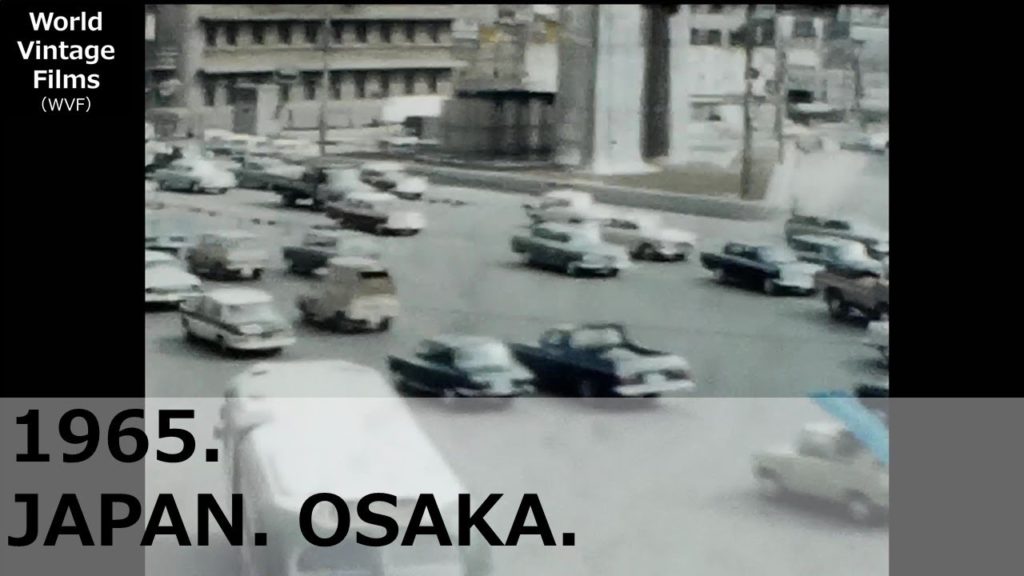Osaka City is a city located in central Osaka Prefecture. From the Meiji era to the early Showa era, the government set up a mining bureau and an artillery arsenal, and various commerce and industry such as trading companies, wholesalers, and newspapers developed mainly in the metal industry and textile industry, and it was called “the best commerce and industry area in the Orient”. The company has risen. After the Great Kanto Earthquake, Osaka City became Japan’s largest city until the expansion of the city area of Tokyo in 1932, with the incorporation of the entire surrounding Higashinari and Nishinari districts and the addition of migrants from Tokyo, making it the sixth largest city in the world. It became the place.
1945-Osaka air raid.
1947 –In response to the provision of a special city in the Local Autonomy Law, the Osaka Special City System Implementation Countermeasures Headquarters was established.
1955-Third city expansion. Incorporated 1 town in Kitakawachi district and 4 villages in 1 town in Nakakawachi district. Area: 202.18 km2, Population: 2,547,316. It is almost the current city area and straddles Settsu and Kawachi. The third city area expansion was initially planned to incorporate 5 cities, 5 towns and 6 villages, but Toyonaka City, Fukida City, Moriguchi City, Fuse City, Yao City, Shonai Town, Toyono County, Niwakubo Town, Kitakawachi County, Kadoma The incorporation of 5 cities, 3 towns and 2 villages in the town, Owada village and Futashima village was not realized.
1956-Transitioned to an ordinance-designated city (special city provisions are removed from the Local Autonomy Act). Tsutenkaku (second generation) is completed.
1961 –Confirmation of the existence of Namba Palace (according to excavation by Tokutaro Yamane et al.).
1964-The Tokaido Shinkansen opens and Shin-Osaka Station opens. Partial opening of Hanshin Expressway No. 1 Loop Line.
1969 –With the Osaka Expo being held in Suita City, the tram was completely abolished in place of the subway extension due to city planning.
1970 –Abolished Osaka Municipal Trolley Bus.
1974-Yodogawa Ward, Tsurumi Ward, Hirano Ward, Suminoe Ward are established to become 26 wards. Area: 206.10 km2, Population: 2,980,487.
In Japan, when we say simply “pre-war”, we usually refer to the period before the outbreak of World War II, starting with the attack on Pearl Harbor. The Japanese economy grew by leaps and bounds over a period of about 19 years, from 1954 to 1973, when the domestic postal code system and Euroclear were established in 1968, followed by rapid progress in bringing the bill clearing system online. In 1956, the White Paper on the Economy was published. During the period of rapid economic growth in the 1960s and 1970s, the economy benefited from special demand from the 1964 Tokyo Olympics and the 1970 Osaka World’s Fair. In 1968, the country’s gross national product (GNP) surpassed that of West Germany to become the second largest in the world. Bullet trains and expressways were built. Just before the 1970s, when Japan became a creditor nation, foreigners began to invest more in Japanese stocks. The Nixon Shock of 1971 led to a substantial revaluation of the yen, which corrected the excessive surplus in the balance of payments and contributed to economic stability. In October 1973, the Fourth Middle East War triggered a rise in the price of crude oil, and Japan fell into an oil shock (the First Oil Shock). Thereafter, the economy moved into a period of stable growth (from December 1973 to February 1991, when the bubble economy burst).
About World Vintage Films
I’m doing a Youtube video of footage taken from the 1910s to the 1980s.
The footage is original and was filmed by my family and my friends while they were traveling.
That’s why most of the footage was shot in Japan.
The first step in the editing process is to convert the video from analog to digital. Then I remove the unnecessary parts and add the original music and subtitles. We don’t want to hide the footage, so we don’t have many subtitles.
Black and white footage may be converted to color.
International and domestic travel around the world, before, during and after the war.
We have over 10,000 films that have not yet been released to the public. We will continue to edit and distribute a few more in the future.
There is a lot of valuable footage. Especially rare are old footage from less developed countries. At that time, the equipment for filming was rare. Pre-war footage of Japan is also valuable. Old cars and trains. There is also footage of airplanes shot from the sky. Towns and markets, and people. And people. Famous tourist spots and natural scenery. The fashion sense is also interesting and different from today. Enjoy the scenery in the old style.
Mostly on 8mm, 16mm, 9.5mm, 35mm, etc. Newer types of video, such as VHS, are not covered.
(I translate in multiple languages, so my writing is poor.)
#1960s
#japan
#OSAKA


AloJapan.com